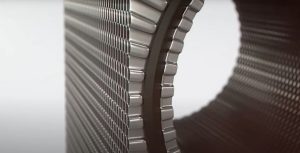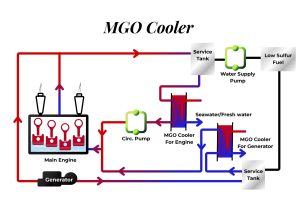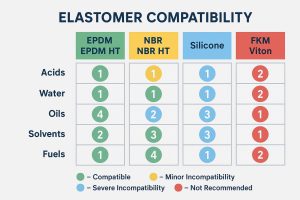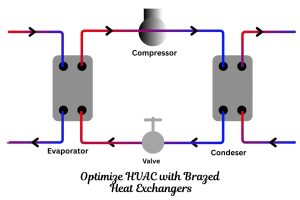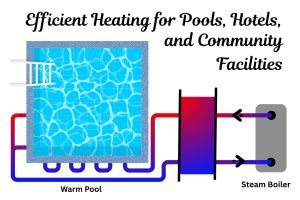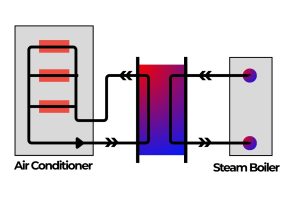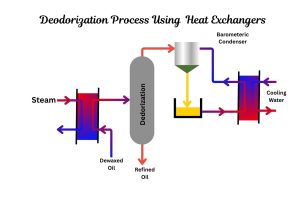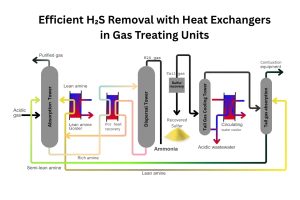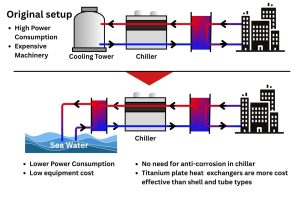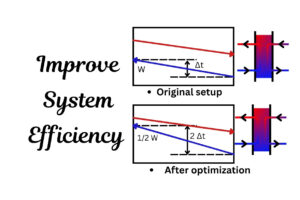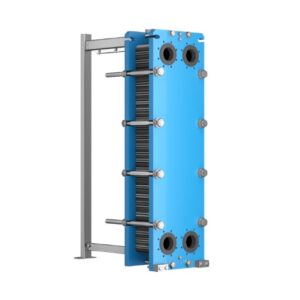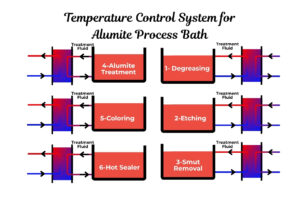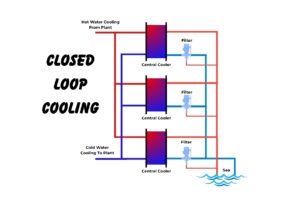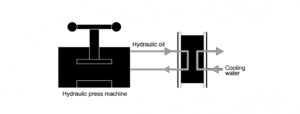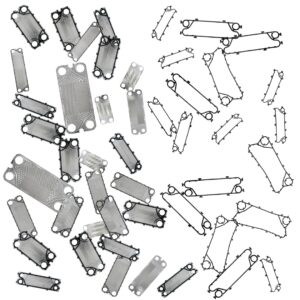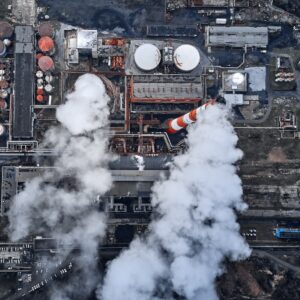Shell and Tube Heat Exchangers: The Indispensable Workhorse of Industrial Processes
Heat exchangers are fundamental components in countless industrial systems, facilitating the transfer of thermal energy between fluids. Among the diverse types available, the Shell and Tube Heat Exchanger (STHX) stands out as the most prevalent and widely used design across the globe. Its robust construction, versatility, and reliability make it the go-to choice for a vast range of applications, from petrochemical plants and power generation to HVAC systems and manufacturing.
Understanding the design principles, advantages, and typical applications of STHXs is essential for engineers involved in system design, operation, or maintenance. While other types like Plate Heat Exchangers (PHEs) offer unique benefits in specific scenarios, the shell and tube design remains an indispensable workhorse, capable of handling demanding process conditions.
What is a Shell and Tube Heat Exchanger? Basic Design and Components
An STHX consists of a few primary components:
- Shell: The outer cylindrical vessel that contains the tube bundle.
- Tube Bundle: A collection of tubes through which one fluid flows. The tubes are held in place by tubesheets at each end. Baffles are placed within the shell to support the tubes and direct the flow of the fluid on the shell side, increasing turbulence and heat transfer.
- Heads (Channels): Covers at each end of the shell that direct the tube-side fluid into and out of the tubes.
Heat transfer occurs as one fluid flows through the tubes (the tube side) and the other fluid flows around the tubes within the shell (the shell side). The heat passes through the tube walls, transferring energy from the hotter fluid to the colder one.
STHXs come in various configurations, standardized by organizations like the Tubular Exchanger Manufacturers Association (TEMA). Common TEMA types (like Fixed Tubesheet, U-Tube, and Floating Head) are designed to address different operational needs, particularly concerning thermal expansion and maintenance access.
Why Are STHXs So Common? Key Advantages
The enduring popularity of Shell and Tube Heat Exchangers is due to several key advantages:
- Robustness and Reliability: They can handle very high operating pressures and temperatures compared to many other heat exchanger types. Their simple mechanical design is inherently strong.
- Versatility: Available in a vast range of sizes, materials, and configurations to suit diverse process fluids and conditions.
- Maintenance: Certain designs (U-tube, floating head) allow the tube bundle to be removed for easier cleaning, which is advantageous for fluids with fouling potential on the shell side. Tubes are also relatively easy to clean mechanically or chemically.
- Cost-Effectiveness: For high pressures, temperatures, or very large capacities, STHXs can be more cost-effective than alternative designs.
- Experience & Standards: Extensive design data, operating history, and industry standards (like TEMA, ASME) exist for STHXs, making design and implementation well-understood.
A Brief History and Origin of Shell and Tube Design
The concept of using tubes within a shell for heat exchange evolved from earlier, simpler designs like coil exchangers and direct contact heaters used in brewing and other early industries. The development of robust shell and tube designs gained prominence during the rapid industrialization of the 19th and early 20th centuries, driven by the needs of steam power, refrigeration, and the nascent chemical and petrochemical industries.
As processes became more complex and involved higher temperatures and pressures, engineers needed reliable equipment to manage thermal energy. The shell and tube configuration, based on fundamental principles of heat conduction, convection, and fluid flow, proved highly adaptable and scalable. Standardization efforts, like the formation of TEMA, further solidified the design by providing guidelines for fabrication, tolerances, and mechanical features, ensuring reliability and interchangeability.
Materials, Manufacturing, and Suppliers
STHXs are manufactured from a wide array of materials, chosen based on the corrosiveness, temperature, and pressure of the fluids on both the shell and tube sides:
- Common Materials: Carbon steel is frequently used for the shell and less critical components, while tubes and tubesheets often require more corrosion-resistant materials like Stainless Steel (AISI 304, 316, duplex grades), Copper alloys (brass, bronze, copper-nickel), Nickel alloys (Monel, Hastelloy), or high-performance materials like Titanium for highly corrosive environments (e.g., seawater).
- Manufacturing: Fabrication involves forming the shell, drilling tubesheets, bending tubes (for U-tube designs), inserting tubes into tubesheets (often by rolling or welding), fabricating baffles, and assembling heads. This requires specialized workshops capable of handling various materials and adhering to strict code requirements.
- Main Suppliers: Numerous companies worldwide manufacture Shell and Tube Heat Exchangers. Many large industrial equipment suppliers offer them, including global corporations and specialized local fabricators. Prominent global manufacturers known for their STHX offerings include Alfa Laval, GEA, Kelvion, Koch Heat Transfer, Chart Industries, and others. These suppliers source raw materials (plates, pipes, tubes) from mills globally, often specifying materials based on international standards (like ASME, ASTM) and project-specific needs.
Considerations When Choosing an STHX (or Another Type)
While STHXs are highly versatile, selecting the optimal heat exchanger for a specific application requires careful consideration. Factors driving the choice between an STHX, a Plate Heat Exchanger, or another design include:
- Operating pressures and temperatures (STHX often excels at extremes).
- Fluid properties and fouling potential (STHX can be advantageous for shell-side fouling).
- Space and weight limitations (PHEs are usually more compact).
- Required thermal efficiency (PHEs often have higher effectiveness for close temperature approaches).
- Maintenance requirements and ease of cleaning.
- Initial cost and long-term operating expenses (including pumping and cleaning).
Evaluating these factors is crucial to ensure you select the most appropriate and cost-effective heat transfer solution.
Conclusion
Shell and Tube Heat Exchangers have earned their reputation as the workhorse of industrial heat transfer due to their robust nature, versatility, and suitability for a wide range of pressures, temperatures, and fluid types. Their historical development is intertwined with the growth of modern industry, and ongoing advancements in materials and manufacturing continue to ensure their relevance.
Choosing the right heat exchanger type and material for your specific process is a critical decision impacting efficiency, reliability, and cost. At HeatingFormula, we possess deep expertise across various heat exchanger technologies, including both Shell and Tube and Plate Heat Exchangers. We can help you analyze your requirements and navigate the selection process to determine the optimal solution for your needs. Explore our [GPHE Selection Guide](https://heatingformula.com/en/gphe-selection/) (covering factors relevant to heat exchanger selection in general) or Contact us for expert consultation on selecting the right heat exchanger, understanding material options, and sourcing GPHE Spare Parts or parts for other heat exchanger types you operate.
Frequently Asked Questions (FAQ) About Shell and Tube Heat Exchangers
-
Q: What are the main components of a Shell and Tube Heat Exchanger?
A: The main components are the shell (the outer vessel), the tube bundle (consisting of tubes, tubesheets at each end, and baffles), and the channel or head (which directs fluid into and out of the tubes). -
Q: When is a Shell and Tube Heat Exchanger typically chosen over a Plate Heat Exchanger?
A: STHXs are often preferred for applications involving high operating pressures and temperatures, fluids with a high fouling potential on the shell side, very large flow rates, or when a more mechanically robust design is required. -
Q: What do the different TEMA types (like AEL, BEM, CFU) signify?
A: TEMA (Tubular Exchanger Manufacturers Association) types classify STHXs based on the design of the front head (channel), shell, and rear head. These different configurations impact thermal expansion handling, maintenance (like tube bundle cleaning), and cost. -
Q: What materials are commonly used for Shell and Tube Heat Exchangers?
A: Common materials include carbon steel, stainless steel (various grades), copper alloys (like brass or bronze), nickel alloys, and titanium, depending on the corrosiveness and temperature of the fluids on both the shell and tube sides. -
Q: Can STHXs be easily cleaned?
A: Cleanability depends on the design. U-tube and Floating Head TEMA types allow the tube bundle to be removed from the shell for easier mechanical cleaning of the shell side. The tube side can often be cleaned mechanically or chemically regardless of the TEMA type, though fixed tubesheet designs require cleaning from the channel ends.

